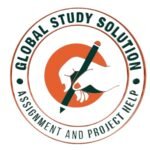Financial Management 5K Word Assignment – Westford UCAM
Ans :
Are you looking for Westford University College MBA, Doctorate, MSC, EMBA, HND, Diploma, BA, 4K to 5K Words Customized Assignments? Look no further! Dr. Aravind Banakar is the most trusted, reliable, and affordable academic expert with over 25 years of proven experience in academic writing of customized assignments and project support.
He has been a lifeline for Westford University College students seeking high-quality, plagiarism-free, customized assignments and Capstone project that strictly follow Westford University College guidelines.
Why Choose Dr. Aravind Banakar for Westford University College 4K-5K Words Assignments?
With more than two decades of expertise, Dr. Aravind Banakar understands the academic requirements of Westford University college 4K to 5K Words assignments and Capstone project better than anyone in the industry.
Team of 100+ PhD Expert Writers
His powerful team of PhD-qualified writers ensures that each Westford University College assignment is researched thoroughly, written with academic precision, and customized to meet the individual needs of MBA, Doctorate, MSC, EMBA, HND, Diploma, BA, students.
With a stellar rating of 4.6/5, Dr. Aravind Banakar’s Academic Writing Services stand out for their quality, authenticity, and client satisfaction.
Overall Rating: 4.6 out of 5 Stars
Criteria | Rating |
Quality of Content |
|
On-Time Delivery |
|
Customer Support |
|
Customization & Originality |
|
Affordability |
|
AI Detection/Plagiarism Free |
|
According to Westford University College norms, assignments should be customized and plagiarism-free.
Trusted by Westford University college MBA Students across India
Thousands of Westford University college students have secured excellent marks in their 20 marks assignments through his expert guidance and timely delivery.
Contact Dr. Aravind Banakar Today!
+91 9901366442, +91 9902787224


